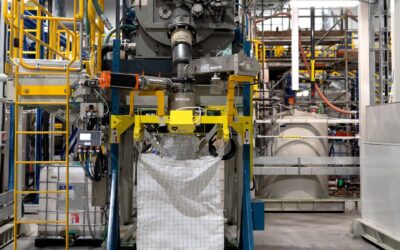Efforts to reduce greenhouse gas emissions have historically been concentrated in the energy sector, whether that’s building more clean energy or electrifying transportation. Yet such a specific focus misses how emissions in one sector of the economy can have their roots elsewhere. New models need to be explored that consider the economy more holistically—the concept of a circular economy is one option that’s gaining traction as a way to loop material into the climate conversation, and reduce emissions outside of the energy sector.
Studies show that as much as 70 per cent of global emissions are induced by our material demand, for everything from raw minerals to complex electronics. Moreover, by most metrics, Canada is failing to lead on sustainable, low-carbon materials. Amongst the G7, it has the worst economic productivity from material consumption and the highest per capita emissions from material waste. Such performance reflects poorly on Canada’s ambitions to be a major supplier of critical minerals and other key clean economy materials. To make inroads, Canada should take a closer look at material management as an additional emissions reduction pathway and push harder to advance the concept of a circular economy.
What is a circular economy?
A circular economy is one that repurposes and manages material, including minerals, metals, plastics, and processed goods, for as long as possible and as productively as possible before they become waste.
Under the circular framework, the well-known “reduce, reuse, [and then] recycle” adage is applied across the flow of material. Reusing and recycling at the disposal stage loops material back into the economy, which reduces the need for and decouples economic value from new material extraction, and also reduces emissions. Thanks to more efficient and effective material consumption, studies project that a circular economy would reduce emissions by up to 45 per cent globally, although estimates vary by sector and modelling assumptions.
Countries are making headway on their circularity path
More and more countries are signalling that circularity will be a growing part of their climate strategies. Major economies like the E.U., the U.S., and China have all set explicit goals to better integrate circularity into emissions reductions and the clean economy, with China listing circularity as the sixth of ten key tasks for plateauing emissions growth.
Some are starting their implementation of a circular economy through knowledge and capacity building. The Netherlands’ DuboCalc and the CO2 Performance Ladder assesses the emissions emitted by both products and processes, for example, and the proposed European Dataspace for Smart Circular Applications would provide a common datasource to assess circularity.
Overall, 79 out of 193 countries specifically mention the circular economy in their United Nations Nationally Determined Contributions (NDCs), which are climate plans showing how each country is reducing their national emissions.
Canada is still out of the loop
Canada’s NDC only mentions circularity in the context of British Columbia. Quebec—the only jurisdiction in Canada with a Circularity Gap Report case study—is only 3.5 per cent circular, in contrast with the global average of 8.6 per cent. Further, Canada does not comprehensively track material flows like the E.U. and has lower rates of recycling. Only 9 per cent of plastic in Canada is recycled compared to 33 per cent in Europe, and Canada does not have an equivalent to the E.U.’s target of reusing or recycling 55 per cent of municipal waste by 2025.
In short, Canada has some catching up to do, particularly as a circular economy is not something that can be implemented overnight. Although some existing policies could be considered circular, like procurement of recycled material and extended producer responsibility assigning management of waste, they haven’t been fully leveraged.
Where Canada does have an edge in circularity is in global demand for its raw material resources and a strong base of clean energy to sustainably meet that demand. Many circular improvements like chemical and industrial recycling are energy intensive, and clean energy has already helped Canadian steel achieve some of the lowest emissions intensities in the industry. Individual businesses in Canada are showing an eagerness for action in this space, with global chemical company BASF piloting a blockchain project to track recycled plastics and tech company HP Canada exploring products-as-a-service models to keep material in the economy for longer.
Additionally, there are emerging case studies on the cost effectiveness of circularity. For example, optimizing packaging has been promoted as a way to reduce food waste in Quebec and substituting for the best available construction materials is reportedly an accessible, affordable, and code-compliant way to halve embodied building emissions in the Greater Toronto area.
The circular upshot
Material management policies have not historically been part of the climate space, but energy sector policies alone can only do so much, especially in hard-to-abate industrial sectors. As shown in our recent paper, circularity can generate significant emissions reductions, with the right support. Upstream product design and downstream waste flows are in particular need of better incentives, integration, and standardization. Making Canada’s economy more circular can ultimately open up critical new opportunities to more fully align the economy with net zero by 2050.








